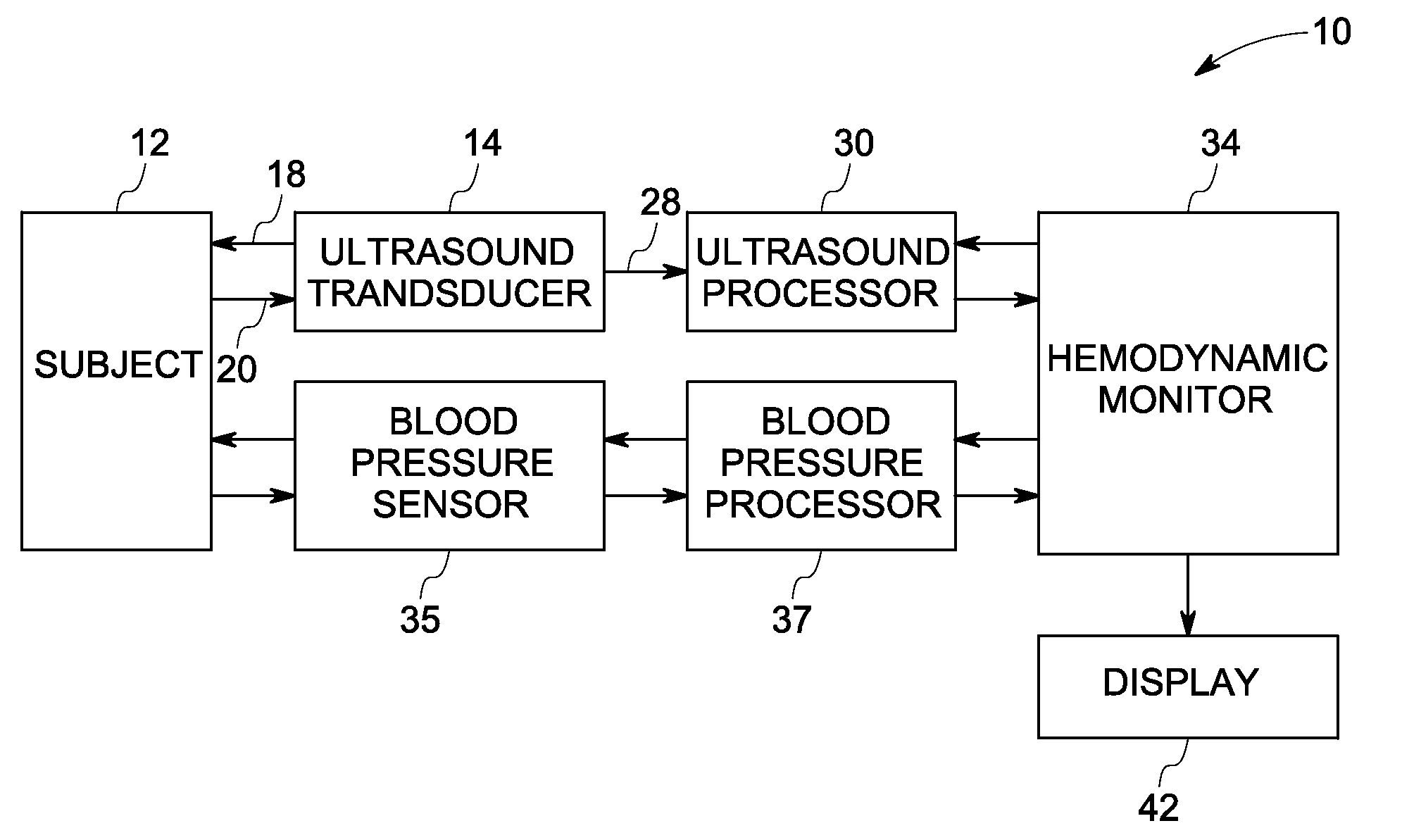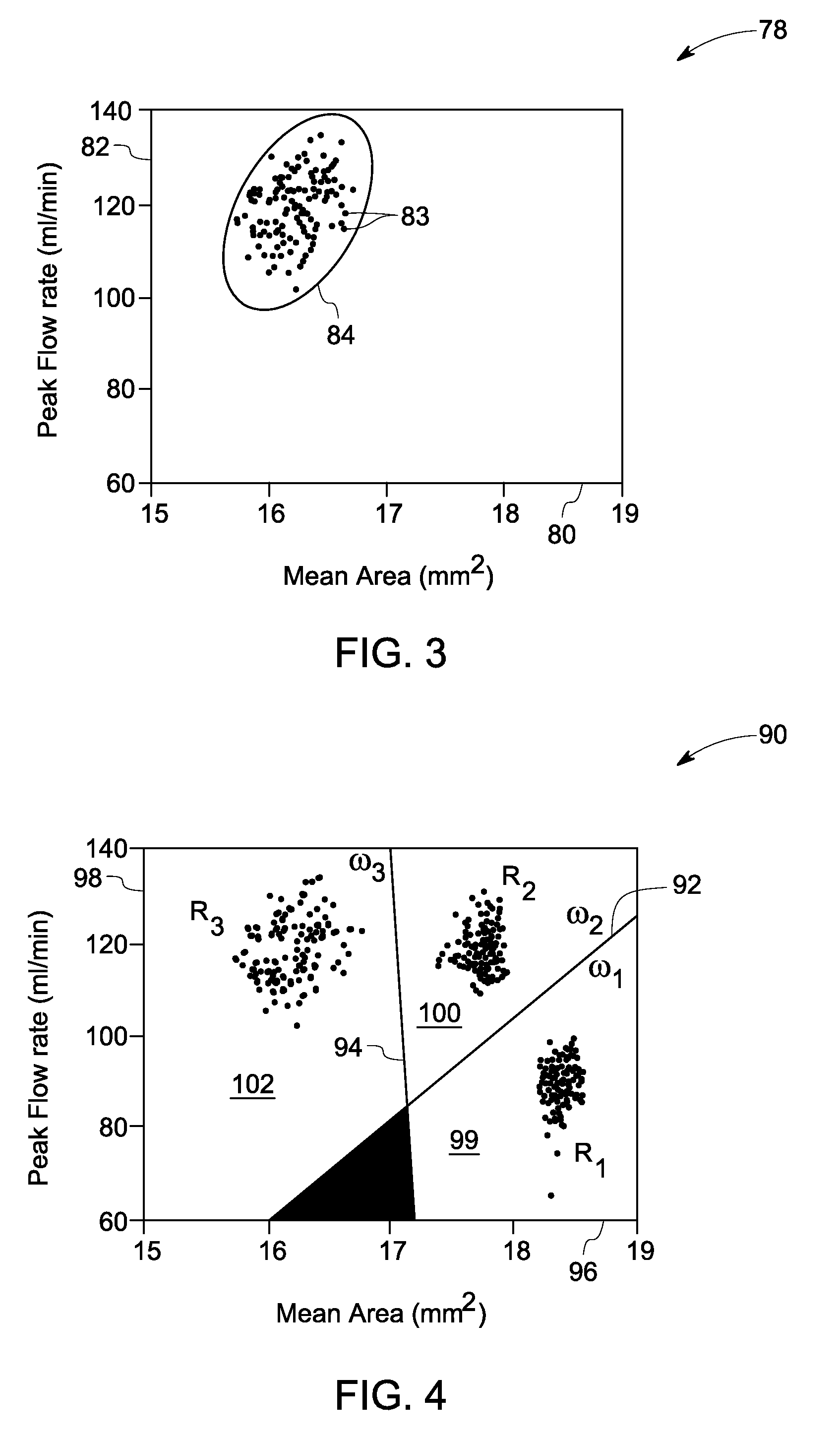System and method for monitoring hemodynamic state
a hemodynamic state and system technology, applied in the field of system and method for monitoring the hemodynamic state, can solve the problems of inability to accurately measure the pulse transit time and thus blood pressure, pain in each inflation, and patient risk,
- Summary
- Abstract
- Description
- Claims
- Application Information
AI Technical Summary
Problems solved by technology
Method used
Image
Examples
examples
[0042]The examples that follow are merely illustrative, and should not be construed to be any sort of limitation on the scope of the claimed invention.
[0043]An animal experiment was conducted to evaluate the feasibility of the proposed approach for compliance-based blood pressure estimation. A pig was used as a large animal model for the cardiovascular system. The animal was anesthetized and instrumented with an invasive pressure catheter placed in the femoral artery with the location verified using ultrasound. Ultrasound data were acquired with a high frequency vascular ultrasound probe on a cardiovascular ultrasound scanner. The arterial blood pressure was continuously monitored invasively using a pressure sensor mounted on a catheter inserted in the animal's femoral artery. A data acquisition system was used to collect invasive pressure readings at a sample rate of 400 Hz during the entire experiment. Ultrasound B-mode and color flow data were acquired on the femoral artery oppos...
PUM
 Login to View More
Login to View More Abstract
Description
Claims
Application Information
 Login to View More
Login to View More - R&D
- Intellectual Property
- Life Sciences
- Materials
- Tech Scout
- Unparalleled Data Quality
- Higher Quality Content
- 60% Fewer Hallucinations
Browse by: Latest US Patents, China's latest patents, Technical Efficacy Thesaurus, Application Domain, Technology Topic, Popular Technical Reports.
© 2025 PatSnap. All rights reserved.Legal|Privacy policy|Modern Slavery Act Transparency Statement|Sitemap|About US| Contact US: help@patsnap.com



